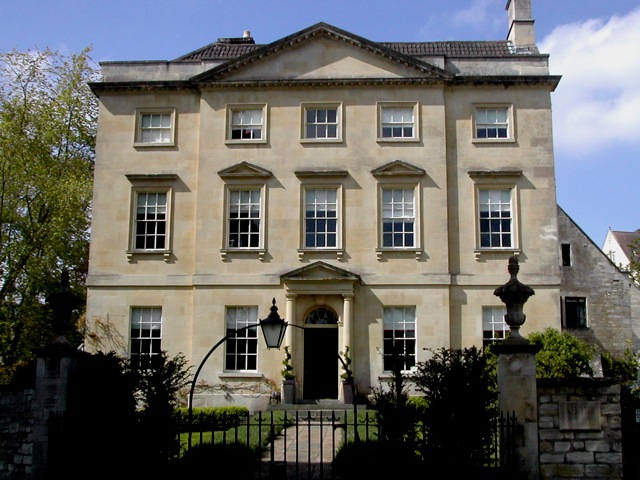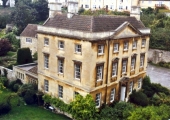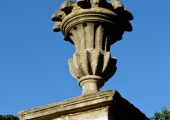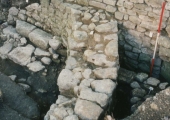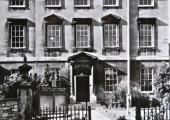.
Abbey House
Church Street, Bradford on Avon, Wiltshire
.
Abbey House is a three-storey, five-bay Georgian building in Palladian style, faced with fine limestone ashlar. The central three bays are set forward under a pediment with a pedimented tuscan doorway in the centre. The southern side is of three bays, again all of ashlar. The architect is not known -perhaps Thomas Warr Atwood (c1733-1775) of Bath; there are resemblances to his work in Bath, such as the Paragon and his brother Richard lived in Turleigh. If so, it would have been one of his last commissions and may have been completed by his successor, Thomas Baldwin (c1750-1820)?
It was built in about 1775 in front of a late medieval house, now a separate dwelling called Horton House, that was built by the wealthy clothier Thomas Horton who acquired the site in 1495 and died in 1530. It was his Bradford town house -he owned property elsewhere, including Westwood and Iford Manor Houses. The site of this house was on the edge of the extensive graveyard of Holy Trinity parish church and of an open space known as The Green.
The property was sold by Anthony Methuen in 1774 to farmer and quarry owner George Bethell, who built the present Abbey House soon afterwards. George Bethell died in 1795 and all his properties were sold. In 1806 it was owned by Thomas Bush and let to the clothier Thomas Gale.
It was occupied by another clothier, Ezekiel Edmonds sr in 1824, then by the maltster Thomas Wheeler, who built a malthouse across the yard to the north. Wheeler was followed by Rev W.H. Bassett in 1867, then by John Little, cloth manufacturer in 1871. It became the house and surgery of a series of medical men: Dr W. Day Lovell in 1887 and Dr Herbert Paget Taylor in 1891 and Henry Christopher Tayler in 1920. By 1939 it had become the offices of the Bradford on Avon & Melksham Rural District Council, which was formed in 1894 and abolished in 1974. After 1974 it was the offices and laboratories of the technical centre of the St Ivel dairy products company, which moved out in 1995. The malthouse survived into the 1930s before being demolished, but its eastern gable remains behind Dutch Barton.
Since the departure of St Ivel, it survived a plan to divide it into four flats and was converted back to being two private houses -Abbey House and the older Horton House- with the conversion of the stable to another house and, above the yard, a short terrace of new-build houses named Rosemary Walk. The yard is a car park for all the separate properties.
Abbey House and Horton House are, together, listed grade II*


